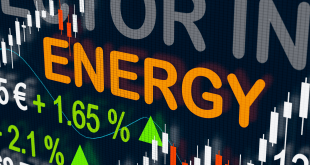Gold prices dipped on Thursday, continuing a downward trend following recent highs, as a U.S.-Japan trade deal and strong earnings from tech companies boosted risk appetite, reducing demand for safe-haven assets like gold.
Market Overview:
- Spot gold dropped 0.3% to $3,378.93 an ounce.
- Gold futures fell 0.4% to $3,384.60/oz.
Despite an earlier rally this week, gold prices retreated from a one-month high, largely trading within a $200 range that has been consistent throughout much of the year. The yellow metal remains well below its record high of over $3,500/oz reached in April.
Boost to Risk Appetite:
Gold and other precious metals saw downward pressure as risk appetite grew, sparked by the trade deal between the U.S. and Japan. The deal, which included a 15% tariff on Japanese exports (down from the initially proposed 25% levy), raised expectations that U.S. President Donald Trump would secure further trade deals with other major economies before the August 1 deadline for tariffs.
- The European Union was reportedly considering a trade deal that would include 15% tariffs, and a deal with India was also close.
The news on these trade negotiations, along with a surge in AI-driven optimism, added to positive market sentiment and contributed to declines in gold prices.
Impact of Tech Earnings and AI Optimism:
Tech-sector earnings also lifted broader risk appetite, particularly after Alphabet (Google’s parent company) exceeded expectations with a strong second-quarter print, fueled by growing demand for artificial intelligence (AI).
Trump’s recent executive orders aimed at boosting the AI industry in the U.S. have further fueled market optimism, with Wall Street reaching record highs on Wednesday. This renewed risk appetite also supported industrial metals like copper, which rose as investors embraced higher-risk assets.
Precious Metals and China’s Gold Consumption:
- Spot platinum fell 0.4% to $1,416.99/oz.
- Spot silver dropped 0.6% to $39.0645/oz.
Despite these pullbacks, China’s gold consumption fell at a slower pace in the first half of 2025. China’s Gold Association reported a 3.5% year-on-year decline, compared to a 5.6% drop in the same period in 2024. This slowdown was mainly attributed to weaker jewelry demand, as higher gold prices deterred consumers. However, institutional demand remained strong, as rising trade and economic uncertainties spurred increased gold buying.
While gold prices face pressure from improving market sentiment and growing risk appetite, underlying economic uncertainties, particularly from trade tensions and political factors, continue to provide support for gold as a safe-haven asset. Investors will likely keep a close eye on trade negotiations, interest rate moves, and economic data as they navigate the evolving market landscape.
 Noor Trends News, Technical Analysis, Educational Tools and Recommendations
Noor Trends News, Technical Analysis, Educational Tools and Recommendations





